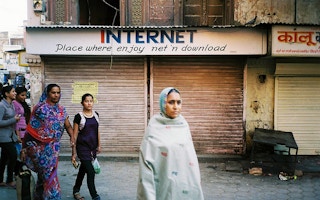Indices that seek to measure international connectivity and rank the most connected countries often fail to capture the damage caused by globalisation, a report argues.
“Connectivity comes with many negative impacts often neglected in indices,” says the first chapter of the report launched by the Asia-Europe Foundation (ASEF) today in Ulaanbaatar, Mongolia.,
Higher connectivity between people, cities and countries can increase the risk of pandemics, inequality, financial instability or pollution, the authors say.
But existing indices, such as the DHL Global Connectedness Index or The Economist’s ICT Globalisation Index, focus on economic, business or technology data and do not reflect these possible harms.
“The absence of environmental and social metrics in most connectivity indices is surprising, not to say shocking,” the report says.
For example, indices often use figures on the number of migrants in a given country, under the assumption that countries that welcome more migrants are better connected.
But nations such as Qatar or Saudi Arabia have a high share of migrants in their population “because they exploit cheap labour”, says Thierry Schwarz, who coauthored the chapter. “Is it a sign of good connectivity? Of course not,” says Schwarz, a former director of ASEF’s political and economic department.
“
The absence of environmental and social metrics in most connectivity indices is surprising, not to say shocking.
Authors, Asia-Europe Foundation report
To account for the damage high connectivity can cause, Schwarz and his chapter coauthor Yvonne Guo, a public policy researcher at the National University of Singapore, propose an alternative measure: the Sustainable Connectivity Index (SCI).
This index would give positive marks to connectivity elements that are neutral or beneficial to other countries, and remove marks for harmful aspects. It would also include and give equal weight to economic, social and environmental criteria.
Developing countries would fare better in the long term in a ranking based on this proposed index, predicts Schwarz.
The report singles out the Maastricht Globalisation Index (MGI) as the only one that reflects the environmental impact of connectivity.
Globalisation researcher Lukas Figge, who has worked on MGI at Maastricht University in the Netherlands, agrees that existing indices do not account for the damage connectivity causes. But he is “a bit sceptical” about the proposed SCI.
The decisions to ascribe positive or negative scores to each criterion would involve underlying value judgements that would reflect different cultural perspectives, Figge says. “From a scientific perspective, this would be difficult to defend,” he says.
Also, the list of metrics proposed to calculate the SCI includes about 70 components, and it will be difficult to access reliable data for all of them, Figge says.
“You are always tempted to include more, but adding too many components makes [composite indicators] more difficult to understand and interpret,” he explains.
The report is the second volume of the ASEF outlook report 2016/2017, published alongside the Asia-Europe Meeting’s 11th summit, an event held every two years for heads of state and government from both continents.
This article was originally published on SciDev.Net. Read the original article.










